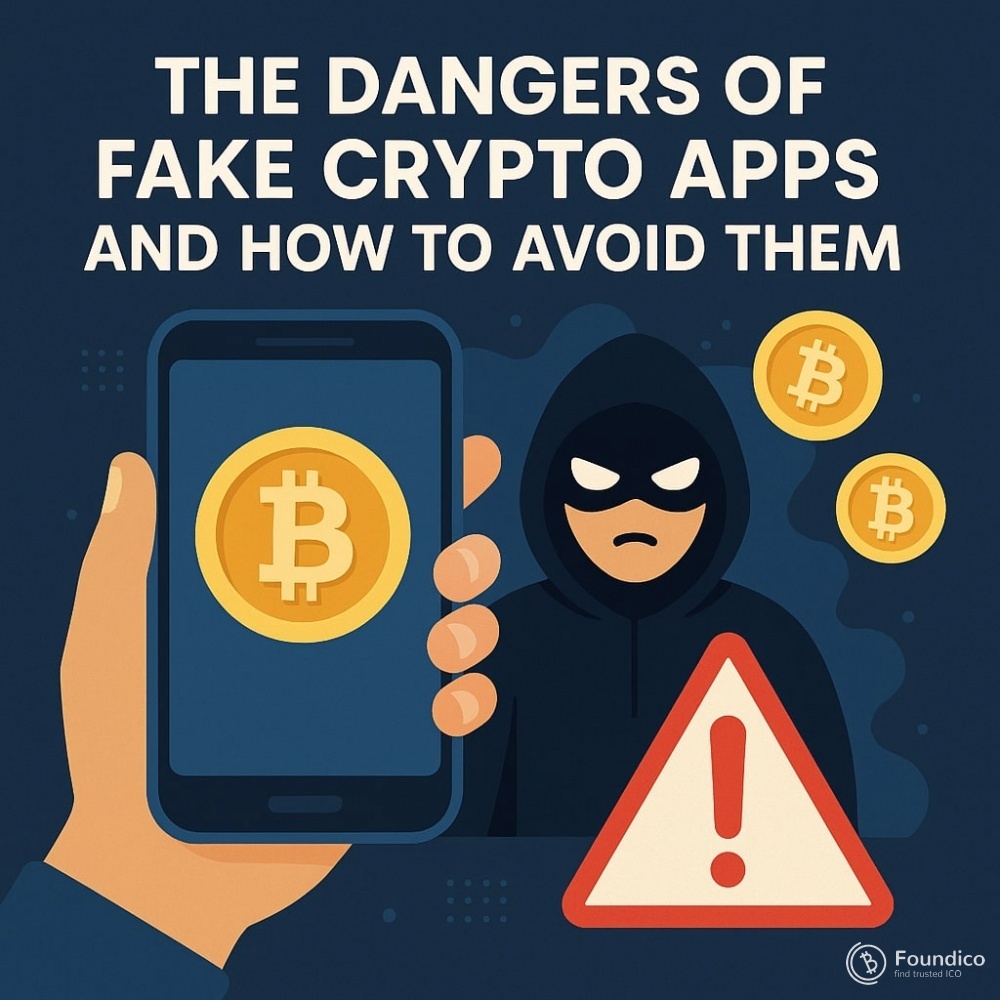The Dangers of Fake Crypto Apps and How to Avoid Them

By Dr. Pooyan Ghamari, Swiss Economist and Visionary
Cryptocurrency has revolutionized the financial landscape, offering decentralized, borderless, and often more efficient ways to store and transfer value. However, alongside its meteoric rise, a darker side has emerged—fake cryptocurrency applications designed to deceive, defraud, and steal from unsuspecting users. As the adoption of digital currencies grows, understanding the dangers of fake crypto apps and how to protect oneself has become critical.
The Growing Threat of Fake Crypto Apps
Fake crypto apps are malicious software disguised as legitimate cryptocurrency wallets, exchanges, or trading platforms. They often mimic the branding and user interface of well-known companies, making it difficult for everyday users to distinguish between genuine and fraudulent applications.
The consequences of downloading and interacting with these fake apps can be devastating. Users might lose access to their private keys, have their funds stolen, or inadvertently give hackers control over their digital assets. Unlike traditional bank fraud, cryptocurrency theft is often irreversible due to the immutable nature of blockchain transactions.
Common Tactics Used by Fake Crypto Apps
Fake crypto apps use a variety of deceptive tactics to lure victims:
-
Impersonation of Popular Brands: Fraudsters clone the logos, website designs, and app interfaces of popular crypto services, exploiting user trust.
-
Phishing and Social Engineering: These apps may prompt users to enter sensitive information like seed phrases or private keys, which are then stolen.
-
Malware Injection: Some fake apps embed malware that can monitor device activity, capture passwords, or redirect transactions to hackers’ wallets.
-
Fake Promotions and Airdrops: Scammers often entice users with promises of free tokens or lucrative returns to get them to download the app and submit personal information.
Why Fake Crypto Apps Are Especially Dangerous
Unlike traditional financial institutions, crypto platforms often operate without central regulatory oversight. This lack of regulation creates a fertile ground for fraudsters. Moreover:
-
Irreversibility: Blockchain transactions cannot be reversed. Once stolen, crypto assets are rarely recovered.
-
Anonymity of Transactions: Hackers can quickly move stolen funds through multiple addresses, complicating tracing efforts.
-
Global Reach: Fake apps can be distributed worldwide via app stores or third-party websites, targeting users regardless of location.
How to Avoid Falling Victim to Fake Crypto Apps
Awareness and vigilance are key to protecting your crypto assets. Here are essential tips to help users avoid fake apps:
1. Download Only from Official Sources
Always download crypto apps from official websites or trusted app stores like Google Play Store or Apple App Store. Even then, verify the developer’s credentials and user reviews carefully.
2. Double-Check the App’s Authenticity
Look out for minor differences in spelling, design inconsistencies, or low download counts. Official apps usually have millions of users and consistent branding across all platforms.
3. Beware of Unsolicited Links
Avoid clicking on crypto-related links received via email, SMS, or social media, especially if they promise unrealistic rewards. Always navigate directly to the official site.
4. Never Share Your Private Keys or Seed Phrases
Legitimate apps will never ask for your private keys or seed phrases via messages or email. Treat these as the most confidential information protecting your funds.
5. Use Hardware Wallets When Possible
Hardware wallets offer an extra layer of security by storing private keys offline. Even if your device is compromised, the hardware wallet remains secure.
6. Enable Two-Factor Authentication (2FA)
Where possible, activate 2FA on your crypto accounts. This provides an additional verification step that can block unauthorized access.
7. Keep Your Software Updated
Regularly update your apps and device firmware to patch security vulnerabilities that hackers might exploit.
What to Do If You Suspect a Fake Crypto App
If you suspect you have downloaded a fake app:
-
Immediately stop using it and uninstall it.
-
Change your passwords and revoke permissions for any linked accounts.
-
Transfer your funds to a secure wallet if you still have access.
-
Report the app to the app store and cybersecurity authorities to help prevent others from falling victim.
The Role of Education and Vigilance
As Dr. Pooyan Ghamari, a Swiss economist and visionary, often emphasizes, education is the most powerful tool against digital fraud. The crypto industry is still young and rapidly evolving, so staying informed about emerging scams and best security practices is crucial for all participants.
Governments, exchanges, and cybersecurity experts must also collaborate to build safer environments, enforce stricter app verification, and spread awareness globally. Only a collective effort can help reduce the prevalence and impact of fake crypto apps.
The promise of cryptocurrency is vast, but it comes with its share of risks—especially from fake crypto apps designed to exploit trust and ignorance. By taking proactive security measures and staying informed, users can safeguard their investments and participate in this exciting new financial frontier with confidence.
Stay vigilant, verify before you trust, and never share your private keys—these simple steps can save you from becoming a victim of crypto fraud.
